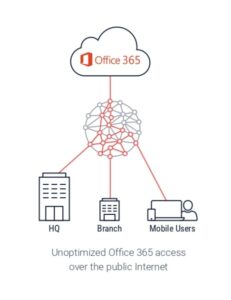It may be difficult to remember, but not so long ago we used to work mainly from an office. The unprecedented global pandemic that took the world by storm, changed our personal and professional life patterns. We moved to work from home, then returned to the office, and back home, with the ebbs and flows of the pandemic.
This working model is here to stay reflecting a transition into a “Hybrid Workforce.”
The transition into a Hybrid Workforce caught many IT teams by surprise. Most organizations were not prepared for prolonged work from home by the vast majority of the workforce. The infrastructure needed to support these remote users, virtual private network (VPN) solutions, was built for the brave few and not for the masses. During the first wave of COVID-19, IT had to throw money and hardware at the problem, stacking up legacy VPN servers all over the world to catch up with the demand.
This is a key lesson learned from the pandemic: enterprises must support work from anywhere, all the time, by everyone. It is now the time to think more strategically about the Hybrid Workforce and the key requirements to enable it.
Seamless transition between home and office
Today, networking and security infrastructure investments in MPLS, SD-WAN and NGFW/UTM are focused on the office. These investments do not extend to employees’ homes, which means that working from home doesn’t have the resiliency, security, and optimization of working from the office. The more “remote” the user is, the more difficult it is to ensure the proper work environment.
OUR TAKE
Look for cloud-first architectures, such as Zero Trust Network Access (ZTNA) and the Secure Access Service Edge (SASE) to deliver most networking and security capabilities from the cloud. By decoupling these capabilities from physical appliances hosted in a fixed location, and moving them to the cloud, they become available to users everywhere. This is an opportunity to converge the infrastructure used for office and remote users into a single, coherent platform that enforces a unified policy on all users regardless of their locations.
Scalable and globally distributed remote access
The current appliance-centric VPN infrastructure requires significant investment to scale (for capacity) and distribute globally (near users in all geographical regions). Beyond the initial deployment, on-going maintenance overloads busy IT teams.

OUR TAKE
Look for remote access to be delivered as a scalable, global cloud service that is proven to serve a significant user base and the applications they require. Consuming remote access as a service will free up IT resources from sizing, deploying, and maintaining the remote access infrastructure required to support a Hybrid Workforce.
Optimization and security for all traffic
Today’s remote access infrastructure provides just that, remote access. IT relies on integration of multiple technologies to optimize and secure remote access traffic.

OUR TAKE
Look for remote access solutions that incorporate optimization and protection for all types of traffic including wide area network (WAN), Internet, and cloud traffic. This is particularly important in the remote-user-to-cloud path, where legacy technology has no visibility or control. By embedding WAN optimization, cloud acceleration and threat prevention into the remote access platform itself, all traffic, regardless of source and destination, is optimized and protected.
Conclusion
Even if your enterprise IT survived the initial transition to working from home, it is now the time to think about the creation of networking and security architecture that can natively support the Hybrid Workforce.

Averett is an authorized partner of CATO Networks, contact us today.
Published by





